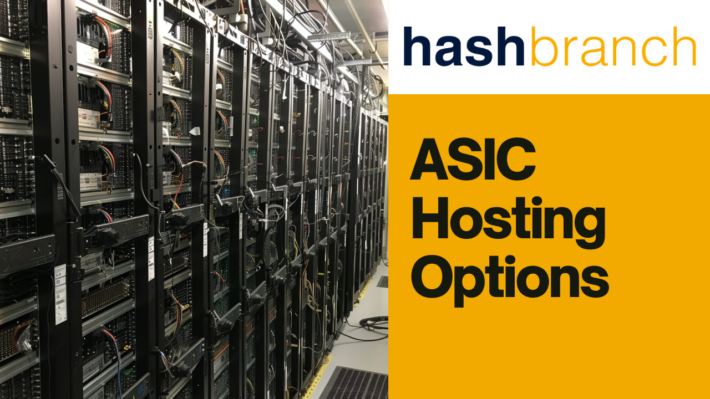How to Calculate the ROI on Your ASIC Mining Investment

03/21/24
Introduction:
ASIC mining presents a compelling opportunity. However, like any investment, it’s crucial to assess its potential profitability before diving in. Calculating the return on investment (ROI) for ASIC mining is essential to navigate the complexities of cryptocurrency markets, fluctuating electricity costs, and evolving mining technologies. This guide will walk you through understanding and determining your ASIC mining ROI, ensuring you make informed decisions about your digital treasure hunt.
Outline:
- Understanding ROI in ASIC Mining
- Definition of ROI and its importance in cryptocurrency mining.
- Overview of the primary components that influence ROI.
- Initial Costs: Hardware and Setup
- Detailed breakdown of ASIC miner costs.
- Additional setup costs: cooling systems, maintenance tools, and more.
- Operational Costs: Electricity and Maintenance
- Calculating electricity costs based on your miner’s power consumption.
- Estimating ongoing maintenance costs and potential repairs.
- Revenue Factors: Mining Rewards and Cryptocurrency Value
- How mining rewards are calculated.
- The impact of fluctuating cryptocurrency values on ROI.
- Calculating ROI: Bringing It All Together
- Step-by-step guide to calculating your ASIC mining investment’s ROI.
- Example calculations using real-world scenarios.
- Enhancing Your ROI: Tips and Strategies
- Choosing the right ASIC miner for your goals.
- Optimizing electricity usage and mining during low-rate periods.
- Joining mining pools to increase earning potential.
- Considering the Intangibles
- The role of community support and networking in successful mining.
- Potential regulatory changes and their impact on ROI.
- Future Outlook and ROI Adjustments
- Keeping up with technological advancements in ASIC mining.
- Adjusting your ROI calculations as market conditions change.
Understanding ROI in ASIC Mining
Return on Investment (ROI) is a crucial metric for any financial endeavor, and ASIC mining is no exception. It measures the efficiency and profitability of an investment, calculated as the return (or gain) from an investment minus the cost of the investment itself, all divided by the cost of the investment. In the context of ASIC mining, ROI helps miners understand how long it will take to recover their initial outlay on hardware and operations before turning a profit.
The primary components influencing ROI in ASIC mining include:
- Initial Hardware Costs: The upfront price of the ASIC miner itself.
- Electricity Costs: The ongoing expense of powering the ASIC miner.
- Mining Rewards: The income generated from successfully mining blocks.
- Cryptocurrency Value: The current market price of the mined cryptocurrency.
Initial Costs: Hardware and Setup
When venturing into ASIC mining, the initial purchase of the ASIC miner represents a significant portion of your investment. Prices can vary widely based on the miner’s efficiency, hash rate, and the specific cryptocurrency it’s designed to mine. High-end models can offer faster returns but require a larger upfront investment.
In addition to the miner, consider setup costs, including:
- Cooling Systems: Efficient cooling solutions to maintain optimal operating temperatures.
- Maintenance Tools: Equipment for routine upkeep or minor repairs.
- Infrastructure: Modifications to your space to accommodate mining operations, such as reinforced shelving or additional electrical circuits.
Operational Costs: Electricity and Maintenance
The operational costs of ASIC mining are predominantly driven by electricity consumption. Each ASIC miner consumes a certain amount of power, measured in watts, to perform its computations. Calculating your electricity costs involves multiplying your miner’s power consumption by the cost per kilowatt-hour (kWh) charged by your utility company.
Maintenance costs, though less predictable, also play a role in your overall ROI. Regular cleaning, component replacements, and potential repairs will contribute to your operational expenses. Setting aside a maintenance fund can help manage these costs without impacting your mining operation’s profitability.
Revenue Factors: Mining Rewards and Cryptocurrency Value
Understanding the potential revenue from ASIC mining requires a deep dive into mining rewards and the fluctuating values of cryptocurrencies:
- Mining Rewards: These are the new coins awarded to miners for validating new transactions and adding them to the blockchain. The reward amount depends on the cryptocurrency’s protocol and can decrease over time, as seen with Bitcoin’s halving events. Your potential daily earnings are a product of your miner’s hash rate efficiency and the current network difficulty.
- Cryptocurrency Value: The value of mining rewards is also subject to the volatile nature of cryptocurrency prices. A surge in the market price can significantly boost your ROI, whereas a downturn can reduce profitability. Tracking market trends and predictions is crucial for timely decision-making in your mining operations.
Calculating ROI: Bringing It All Together
Calculating the ROI of your ASIC mining investment involves several steps:
- Calculate Initial Investment: Sum up the cost of the ASIC miner, any additional setup costs, and initial operational expenses.
- Estimate Operational Costs: Determine your daily electricity costs based on the miner’s power consumption and your local electricity rate. Include estimated maintenance costs over your projected calculation period.
- Project Revenue: Based on the current mining difficulty and the hash rate of your ASIC miner, estimate your potential mining rewards. Convert these rewards into fiat currency based on the current value of the cryptocurrency you’re mining.
- Compute ROI: Use the formula ROI = (Gains from Investment – Cost of Investment) / Cost of Investment. Calculate your gains by subtracting your total costs (initial investment + operational costs) from your projected revenue.
Enhancing Your ROI: Tips and Strategies
Maximizing the ROI of your ASIC mining investment requires strategic planning and continuous optimization:
- Choose the Right ASIC Miner: Research and select a miner that offers the best balance between cost, efficiency, and longevity for your targeted cryptocurrency.
- Optimize Electricity Usage: Consider mining during off-peak hours if your electricity provider offers variable rates. Explore renewable energy options to reduce costs further.
- Join Mining Pools: While solo mining offers the chance for larger, less frequent rewards, joining a mining pool can provide more consistent earnings. Pools combine the hashing power of all members, increasing the chances of earning mining rewards, which are then distributed among members according to their contributed hash power.
- Stay Informed: The cryptocurrency market is dynamic. Keeping abreast of market trends, mining technology advancements, and changes in network difficulty can help you adapt your strategies to maintain or enhance your ROI.
Considering the Intangibles
Beyond the hard numbers, several intangible factors can significantly impact your ASIC mining ROI:
- Community Support and Networking: Engaging with the mining community can provide invaluable insights, troubleshooting tips, and advice on optimizing your setup. Community forums, social media groups, and mining conferences are excellent resources for staying informed and connected.
- Regulatory Changes: The cryptocurrency mining landscape can be dramatically affected by regulatory changes. Being proactive and staying informed about potential legal shifts in your country or region can help you anticipate and mitigate risks to your investment.
- Adaptability: The ability to adapt to changing market conditions, technological advancements, and shifts in mining difficulty or rewards structure is crucial. Flexibility in your mining strategy can enhance long-term ROI by allowing you to pivot as needed.
Future Outlook and ROI Adjustments
The dynamic nature of cryptocurrency and mining technologies means that today’s profitable strategies may not hold the same value tomorrow. Here’s how to stay ahead:
- Technological Advancements: Keep an eye on emerging mining technologies and ASIC models that offer better efficiency or open opportunities for mining new cryptocurrencies. Upgrading your hardware could be a worthwhile investment to maintain or improve ROI.
- Market Dynamics: Cryptocurrency prices, mining difficulty, and network hash rates are subject to fluctuation. Regularly review your ROI calculations to account for these changes, and be prepared to adjust your mining approach to align with current market conditions.
- Energy Innovations: Developments in renewable energy solutions or changes in electricity pricing can affect operational costs. Exploring alternative energy sources or energy-efficient mining practices can help sustain your mining operation’s profitability.
Final Thoughts
Calculating the ROI on your ASIC mining investment involves a careful analysis of both tangible costs and potential revenues, along with a consideration of various intangible factors that could impact profitability. The keys to maximizing your mining ROI lie in selecting the right hardware, optimizing operational costs, staying informed about market and regulatory changes, and maintaining the flexibility to adapt your strategy as needed.
As we look toward the future, the ability to navigate the evolving landscape of cryptocurrency mining with informed decision-making and strategic planning will distinguish successful miners. Remember, the goal of ASIC mining is not just to generate immediate returns but to build a sustainable and profitable long-term operation that can weather the ups and downs of the cryptocurrency market.
By embracing the principles outlined in this guide, you’re well-equipped to embark on your ASIC mining journey with confidence, aiming for the best possible return on your investment while contributing to the security and robustness of the blockchain networks you choose to mine.



